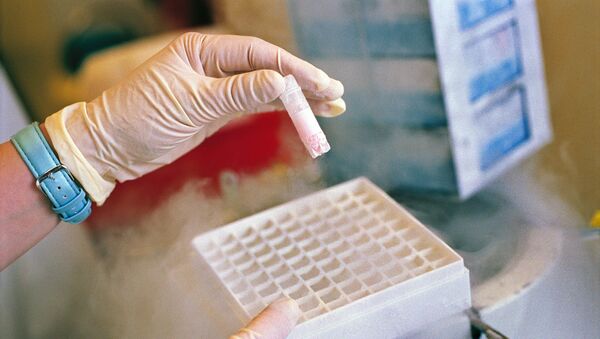Chinese scientists have managed to create hybrid of a pig and monkey for the first time, according to a study published in the journal Protein & Cell. Biologists at the State Key Laboratory of Stem Cell and Reproductive Biology in Beijing, implanted primate embryonic stem cells into sows, which resulted in the birth of ten piglets, two of them were chimeras. The hybrids looked like regular piglets although their organs – heart, liver, spleen, lungs, and skin – had a small portion of monkey cells, namely crab-eating macaques.
All of the 10 piglets died within a week. Scientists say they cannot determine the cause of their death, but the fact that non-chimeric pigs died too led researchers to believe that in vitro fertilisation was to “blame” for their deaths, as this process doesn’t work in pigs as well as it does in humans or other animals.
"We believe this work will facilitate future developments in xenogeneic organogenesis, bringing us one step closer to producing tissue-specific functional cells and organs in a large animal model through interspecies blastocyst complementation", the study said
The aim of this scientific work is to grow organs in animals for further transplantation. Pigs are often regarded as potential donors for humans as their organs are quite similar in size to ours. As for the choice of monkey for the test, this can be explained by similarities in DNA between humans and chimps. The team of scientists is now working on creating pig-monkey hybrids with a larger proportion of primate cells. If these tests are successful, the next step would be engineering a chimera in which one organ will consist entirely of monkey cells.
Humanzee and Organ Transplantation
Chinese researchers opted for monkey embryonic stem cells for ethical reasons. In 2017, Juan Carlos Izpisua Belmonte and his team at the Salk Institute in California created pig-human chimeras. However, the embryos were only allowed to develop for a month due to concerns that the chimera’s brain could be partly human hence further tests on it were deemed unethical.
Some scientists support the creation of a humanzee. David Barash of the University of Washington said creation of such a hybrid would make humans realise that they are “not unique” and teach them to respect animals. “Such an individual would not be an exact equal-parts-of-each combination, but would be neither human nor chimp: rather, something in between”, Barash said.
Spanish newspaper El Pais reported in July that Belmonte and his team have already created human-monkey chimeras in China, however the results of the study have not yet been published.
For some scientists the idea of growing human organs in pigs doesn’t seem plausible. Commenting on the study by Chinese scientists, cell biologist Paul Knoepfler at the University of California said: “Given the extremely low chimeric efficiency and the deaths of all the animals, I actually see this as fairly discouraging". Knoepfler added he is not convinced that it will ever be possible to grow organs suitable for transplantation by creating chimeras, although he said that it makes sense to continue studying this approach and looking into other ways, such as tissue engineering.

